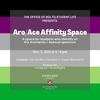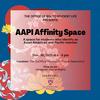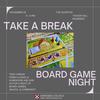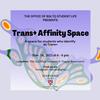This post first appeared on the Harvard Sexual Literacy Project column on November 2, 2017.
Sheehan D. Scarborough, Director of the Office of BGLTQ Student Life ("SDS"): Many thanks to the folks behind the Sexual Literacy project for inviting us as guest columnists today! We’re glad to have the space to speak to some of the concerns that have come up for the queer community in regard to sexual assault and intimate partner violence, or “rape culture” generally speaking. I want to “light a candle”, so to speak, to be mindful of those who have experienced this harm. We’ll try to hold this flame with care and respect as we move forward. But to start off, perhaps we should clarify who/what are we referring to when we talk about the “queer community”?
Undergraduate Intern in the Office of BGLTQ Student Life ("BJG"): Sure! The queer community is made up of people who identify as Lesbian, Gay, Bisexual, Transgender, Queer, or any other identity that is not straight or cisgender. It’s important to note that not everyone within the community identifies as queer, and people can hold multiple LGBTQ+ identities, such as being transgender and pansexual. Even amongst LGBTQ+ people, there is sometimes doubt as to whether it’s a “community” in the traditional sense, as there are a variety of identities and experiences that fall under this umbrella, and everyone doesn’t experience the same sense of connection to others in the group.
SDS: That’s right. It may be more accurate to talk about queer communities, plural. No two communities look the same, or have the same needs, or even advocate for the same rights and resources. But in general, there are some features that are consistent across communities: for example, they tend to be small, “where everybody knows your name”. Access to community isn’t always guaranteed, and this can depend on where a person lives and how open they are about their queer identity.
That said, when we talk about sexual assault or intimate partner violence in the queer community, we’re not talking about a new or heretofore unseen form of harm. Rather, it’s the same old, pernicious harm, but played out in a particular social and cultural context. It’s important to acknowledge that.
BJG: There are a variety of features that generally impact relationships in queer communities. There can be pressure for the relationship to look perfect or live up to a certain standard, particularly since the small size of the community can lead to fewer examples of what a relationship can look like. The smallness of the community can also lead to “two degrees of separation” so to speak, where others in the community are all aware of the relationship and the partners in the relationship have many mutual friends. There can also be relationships in which partners meet anonymously, particularly for those who are not out. All of these features can impact someone’s decision to communicate their experiences in their relationships.
SDS: Even if we just look at something like outness, for example, it makes sense that a person who has concerns about being perceived as queer may not share everything about their relationship with those who under other circumstances might be considered confidants. In reality, this can also prevent people from reaching out for help from offices or organizations that support those who have experienced the harm of sexual violence or assault. There are lots of reasons why a person would not want to openly identify or be identified as queer: for example, out of fear of reprisals or stigma, for safety reasons, because they haven’t decided or aren’t sure that they do identify as queer, or even because the language and labels (gay, bi, trans, etc) just don’t fit their experiences. This also applies to the language we use to describe those who experience harm: “survivors” and “victims”. The question for some people becomes, ‘Does this apply to my situation? If the language doesn’t apply, then is this a resource or a support system that is actually made for me, with my experiences in mind?’
BJG: Beyond the barriers for reaching out for support, barriers also exist on the other end by the offices and people who are supposed to be in a position to provide support, such as police officers and counselors. It can be invalidating for someone to have to explain themselves more than once or justify their situation, because others don’t trust it at face value or their situation doesn’t seem to fit the typical mold, or the stereotype. A person could also have concerns about their situation being given the care and attention it deserves, as prejudice, transphobia, and homophobia often lead people to dismiss queer experiences.
SDS: Wow, I’m glad this is just the start of this conversation. There is so much more to say! Next week, we’ll continue this conversation and consider the role that community has to play in supporting those who have experienced harm. As people who identify as members of the queer community, we’ve tried to shed light on an uncomfortable topic while also holding these experiences with sensitivity. Just as we lit the candle at the start of this post, we’ll carry it with us over the next two posts as well.
Signatures:
Sheehan Scarborough, Director of the Office of BGLTQ Student Life
BJG, Undergraduate Intern ("Quintern") in the Office of BGLTQ Student Life





